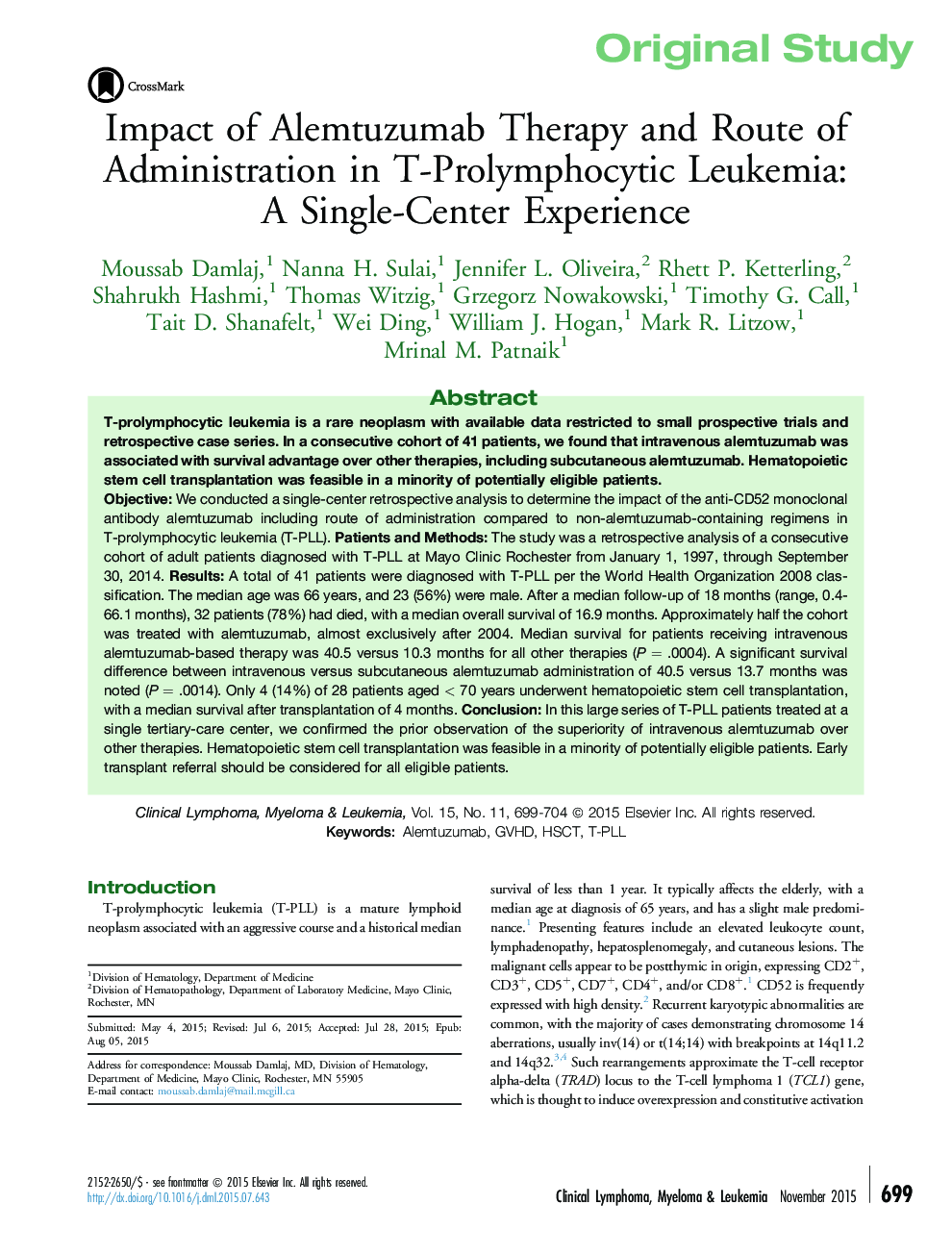| Article ID | Journal | Published Year | Pages | File Type |
|---|---|---|---|---|
| 2754369 | Clinical Lymphoma Myeloma and Leukemia | 2015 | 6 Pages |
ObjectiveWe conducted a single-center retrospective analysis to determine the impact of the anti-CD52 monoclonal antibody alemtuzumab including route of administration compared to non-alemtuzumab-containing regimens in T-prolymphocytic leukemia (T-PLL).Patients and MethodsThe study was a retrospective analysis of a consecutive cohort of adult patients diagnosed with T-PLL at Mayo Clinic Rochester from January 1, 1997, through September 30, 2014.ResultsA total of 41 patients were diagnosed with T-PLL per the World Health Organization 2008 classification. The median age was 66 years, and 23 (56%) were male. After a median follow-up of 18 months (range, 0.4-66.1 months), 32 patients (78%) had died, with a median overall survival of 16.9 months. Approximately half the cohort was treated with alemtuzumab, almost exclusively after 2004. Median survival for patients receiving intravenous alemtuzumab-based therapy was 40.5 versus 10.3 months for all other therapies (P = .0004). A significant survival difference between intravenous versus subcutaneous alemtuzumab administration of 40.5 versus 13.7 months was noted (P = .0014). Only 4 (14%) of 28 patients aged < 70 years underwent hematopoietic stem cell transplantation, with a median survival after transplantation of 4 months.ConclusionIn this large series of T-PLL patients treated at a single tertiary-care center, we confirmed the prior observation of the superiority of intravenous alemtuzumab over other therapies. Hematopoietic stem cell transplantation was feasible in a minority of potentially eligible patients. Early transplant referral should be considered for all eligible patients.
